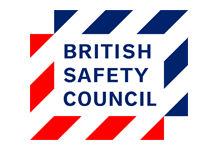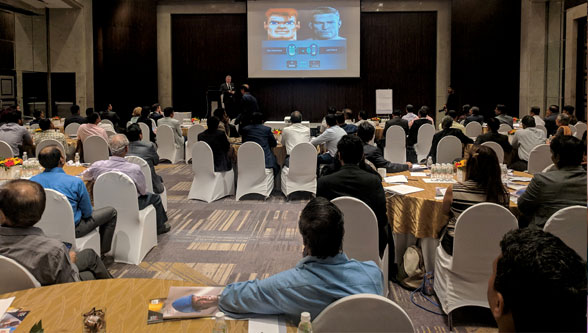Good practice advice for employers on how to create a positive health, safety and wellbeing culture at work were among the highlights of the British Safety Council’s first-ever annual health and safety conference in India.
The conference took place in Mumbai in February and brought together expert speakers from the UK and India to explore how businesses can achieve the highest standards of health, safety and wellbeing at work.
Over 120 senior health and safety practitioners attended from some of India’s leading companies, including Adani Power, Asian Paints, DLF, Reliance Life Sciences, Tata and Thermax.
Future of work and risk
Opening the conference, Mike Robinson, chief executive of the British Safety Council, explained that future developments in technology and the global labour market could have both positive and negative impacts on the health, safety and wellbeing of workers.
For example, Mike said that the growth in remote working – via technology such as smartphones and home computers – could provide workers with more control over their lives, which in turn could have a positive impact on their mental wellbeing.
However, he warned that remote working created an ‘always on’ culture, “where people feel they cannot get away from the workplace”, with a resulting negative impact on their mental health.
Celebrating health and safety success
Lawrence Waterman OBE, chairman of the British Safety Council, suggested ways of ensuring effective health and safety leadership by managers and supervisors and creating a positive health, safety and wellbeing culture.
Lawrence said his experience as head of health and safety on the London 2012 Olympics construction project had taught him that praising, rewarding and sharing good health and safety behaviour by workers was much more effective in encouraging everyone to work safely than giving negative feedback or focusing on problems such as accidents.
Lawrence explained that during the London 2012 project, the chief executive of the Olympic Delivery Authority had joined the workers to celebrate achieving the first set of one million hours of work without a reportable incident. Following a team photograph and a free breakfast for all, the workers were personally thanked by the chief executive and given a framed copy of the photograph.
“People were still talking about this a year later,” explained Lawrence. “If we had just done a safety inspection and found three non-compliances and told people off, they would have stopped talking about it by the next day. They wouldn’t have been remembering it a year later.”
Promoting a positive culture
Another highlight was a presentation by Clare Solomon, creative and commercial director at consultancy Tribe Culture Change, on how to implement a health and safety culture change programme.
Clare explained that the way health and safety is communicated to workers – for example, during a training session or on a poster – is crucial to encouraging them to act safely. She therefore provided some useful tips on effective communication techniques.
For example, Clare said that any messages had to be credible or workers would not pay attention to them. “If you’re telling people to report near misses but when they do report them managers don’t get back to them or dismiss the report it’s not going to work,” she warned.
Workplace wellbeing
Dr Carolyn Yeoman, organisational psychologist at OCAID Wellbeing Limited, explained that when workers are experiencing poor mental health they’re not productive and have a higher risk of accidents. This makes it essential for employers to take steps to both reduce stress at work and to ensure good mental health among their employees.
Carolyn said that because the management style and behaviour of leaders can have either a positive or negative impact on workers’ mental wellbeing, managers should be trained to become “emotionally intelligent”.
“Leaders need to be more self-aware in terms of their management style and what impact it has on people,” she explained. “Leaders need to understand the signs and symptoms of stress and poor mental wellbeing so they know if the team or an individual is suffering and know how to have a conversation with them.”

For more information,
Website: www.britsafe.in

